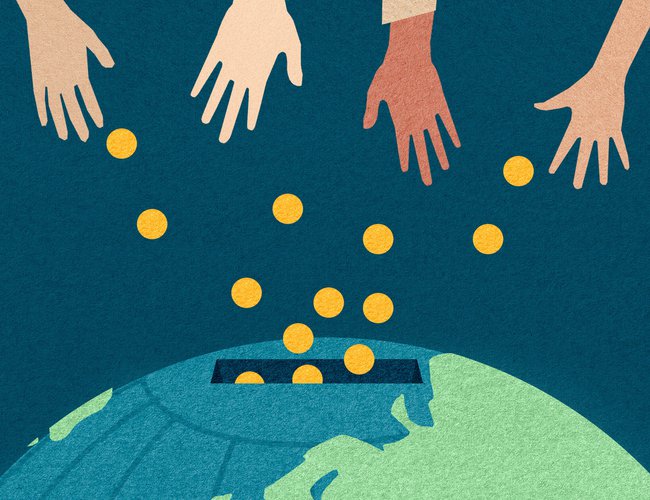
In November last year, the UK Chancellor of the Exchequer Rishi Sunak announced that the UK government would no longer be spending 0.7% of its Gross National Income (GNI) from 2021 on official development assistance as it had been doing since 2015. The controversial decision came amid the economic fallout of the pandemic with Prime Minister Boris Johnson saying that the step was ‘needed during the economic hurricane caused by Covid-19 pandemic’. With the spending reduced to 0.5% of the GNI, the UK government would be saving around £4bn annually.
The move saw criticism from many aid agencies, development actors and MPs from the PM’s own Conservative party. Many argued that at a time when the government should have increased its spending on foreign aid, the decision to reduce it would be counterproductive. But quite frankly, the move is something that many other governments across the world have been pondering over ever since the Covid-19 pandemic broke out. It is a known fact that loss of revenue, paired with the need to increase expenditures, has caused large government budget deficits around the world. In this context, as the pandemic increases the need for aid around the world, donors are facing tough choices over whether to continue helping vulnerable populations abroad or focus their attention at home.
According to the OECD, 2020 was a record year for foreign aid, which reached an all-time high of USD 161.2 billion. This was a 3.5% increase in real terms from 2019. While this is definitely encouraging, what needs to be understood is that the record high foreign aid came mostly to help developing countries tackle the coronavirus pandemic. The economic and social fallout caused by the pandemic remains largely unaddressed in many ways and with countries like UK cutting their assistance amount from 2021 onwards and other countries hinting that they would slowly focus on their own economy, the way forward looks bleak.
The onset of the pandemic has meant that many other sector are already seeing cuts in assistance. According to Development Initiatives (DI), a data focused international development organization, international humanitarian assistance plateaued at USD 30.9 billion in 2020 and support for non-Covid humanitarian needs fell despite unprecedented needs. This decrease could slowly invite multitude of problems in countries requiring humanitarian assistance like Syria and Yemen. The consequence could range from extreme poverty to instigation of civil war. The WFP has already warned that in addition to the threat posed by the pandemic, the world faces ‘multiple famines of biblical proportions’ that could result in up to 300,000 deaths per day — a ‘hunger pandemic’ especially in countries requiring humanitarian assistance.
The focus on tackling the pandemic and lesser stress on development assistance will also bring a halt to the progress developing countries have making in areas like education, governance, climate change and gender issues. Take for instance Nepal. International non-governmental organizations pledged aid worth NRs 21.62 billion for 2020-21, around 13% less than their pledge for 2019-2020, which stood at Rs 24.79 billion. This could put many long running projects in jeopardy. It is quite natural for development partners to implement projects which run for an average of 2 – 3 years. As per their logical framework, interventions are planned for throughout the duration of the project. With lesser funds, these projects will either be forced to terminate or cut down on their activities. This will have a grave impact on the beneficiaries and result in incomplete and unsustainable outcomes.
In the past few years, development partners’ focus on sectors like education, gender and governance in Nepal has brought about major changes, especially in light of the new administrative structure of the country. But with large amount of fund either re-directed to Covid-19 management or being cut-off entirely, progress made in these sectors stand on shaky grounds. With new local government to be elected next year, development partners would be expected to assist in their capacity building. Development partners would also be expected to help implementation of policies as well as major projects such as President Educational Reform Program when it comes to the education sector. However, all these remain uncertain now. The DI has said that the pandemic has reinforced the need for long-term resilience building to help countries withstand future shocks, such as the impacts of climate change but with redirection of funds, this looks increasingly difficult.
- Ukrainian Crisis And The World (Dis)Order
- Apr 22, 2022
- China’s Cautious Steps In The Graveyard Of Empires
- Aug 18, 2021
- Communist Party of China centenary celebrations Reading between the lips
- Jul 14, 2021
- Second Wave Of Covid-19 In India: Deadly Blow To The Economy
- Jun 23, 2021
- The West: A Sore Loser In Vaccine Diplomacy
- May 31, 2021

















